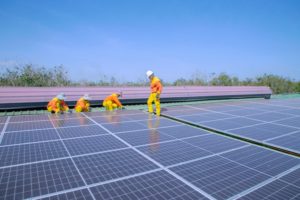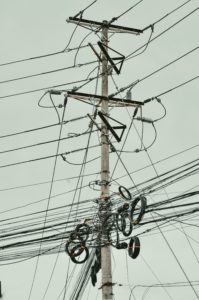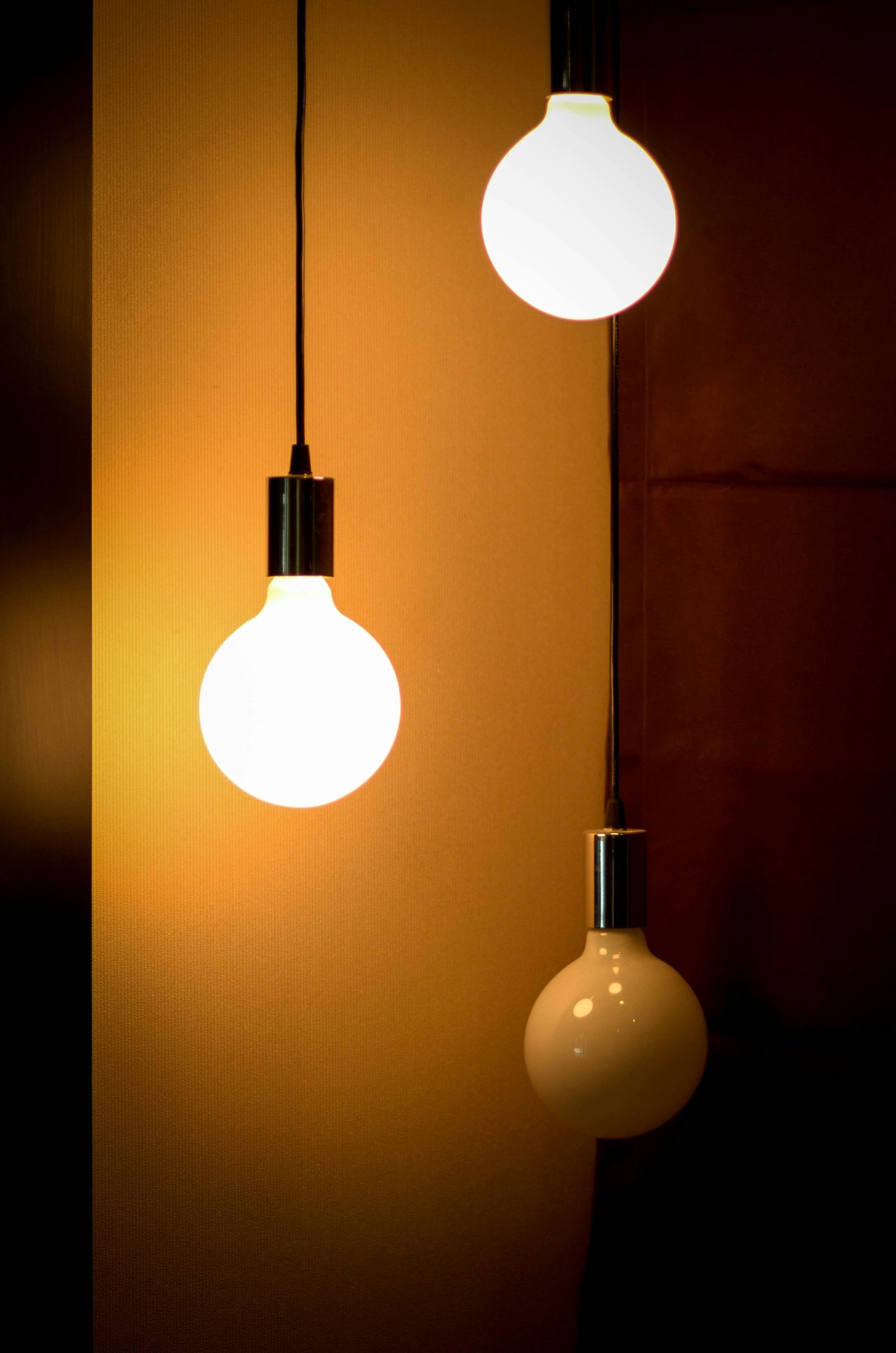Why is this important?
Lighting accounts for approximately 19 % of global electricity demand. (1) Adopting energy-efficient lighting can reduce energy use by 75% if usage stays the same. (2)
Environmental lighting practices beyond simply using more efficient light bulbs are also crucial for reducing the negative impact of artificial lighting on ecosystems. Outdoor LED lighting can disrupt natural rhythms in wildlife and plants due to its intense blue light. (3) Adopting warmer-coloured lights can help reduce these effects; however, this trade off highlights that sustainable lighting practices go beyond new technology and require behaviour change. Therefore, implementing holistic environmental lighting practices that address both technological and behavioural aspects can support energy conservation and ecological benefits.
What's the solution?
Beyond installing more efficient lighting, organisations should take a holistic approach and integrate both behavioural change and technological solutions. Simply improving efficiency may lead to increased electricity use due to lower costs (rebound effect). (4)
Optimising the use of natural light through the orientation and placement of windows in a building can significantly reduce energy consumption by maximising natural light. (5) Adjusting working hours to align with daylight hours, installing dimmer switches to control artificial light, and using blinds and curtains effectively are practical steps toward sustainable lighting practices. Moreover, placing light switches in convenient locations can encourage people to turn off lights when not in use.
Energy saving equipment, such as motion sensors and timers, should also be used to automatically control lighting. Investing in lower wattage bulbs and more efficient technology can lead to energy savings, especially when combined with regular maintenance like cleaning light fixtures to ensure they work optimally.
Whilst technology and smart building designs are key, promoting green habits—like turning off lights manually in case motion sensors are not installed (yet) — also plays an important role in reducing energy consumption and raising awareness.
To meet the UN’s 2030 goal of reducing electricity demand for lighting by 14%, organisations will need to adopt and maintain sustainable lighting practices. (6)
Key actions
1. Harness natural light by design
Design buildings with windows in every room (also for ventilation). The conception and operation of windows depend on the sun exposure of the façade on which they are located. Use shutters, blinds or curtains to control light if necessary. Wherever possible, consider flexible working hours to take full advantage of natural light.
2. Study and optimise lighting needs
Based on action 1, rationalise the light sources and usage by favouring natural lighting and dimmer switches. Place switches at entry and exit points of rooms to encourage people to turn off the lights when they leave.
3. Use automatic control devices
Install motion sensors or timers that automatically switch on/off lights in each room or area to conserve energy when the room is unoccupied.
4. Purchase energy saving equipment
Purchase solar lighting for outdoor usage and install LED globes or Compact fluorescent lamps (CFL) for indoor usage as they only use 75% less energy than incandescent lighting. (12)
5. Reduce the wattage
Reduce wattage to save energy in rooms where high wattage is not needed. (13) The lower the wattage, the higher the savings.
6. Explore lighting-as-a-service
Consider programmes like lighting-as-a-service, where the lighting company retains ownership of the equipment while entering into a performance-based contract supported by KPIs, such as light levels, energy savings, and maintenance standards. This model incentivises manufacturers to produce durable, energy-efficient equipment and ensures more efficient system operation through expert management.
7. Keep them clean
Maintain light bulbs, lamps, and sockets regularly to ensure they last longer and emit the same quality of light.
8. Raise awareness
Inform and raise awareness of all users of the benefits of saving energy. Use awareness raising posters and stickers, e.g. to incite staff to turn off lights, in case automatic devices are not installed (yet).
To consider
-
Potential co-benefits
- Cost savings: Opting for equipment efficiency and the longest lighting lifespan can lead to significant cost savings over time even when the initial purchase price might be higher.
- Improved health and working conditions: Enhances the overall environment and health of staff and occupants by aiding better circadian rhythm support and reducing stress. (14)
-
Success conditions
- Clear procurement and construction policies: Inclusion of specific lighting criteria is essential to optimise buildings and for ensuring energy efficient lighting.
- Point of contact: Appoint someone who is responsible for overseeing the design, implementation, and maintenance of lighting systems.
- Quality equipment: Ensure the use of long-lasting, good colour quality and low consumption equipment.
-
Prerequisites & specificities
- Natural light availability: Ensure that natural light is utilised where possible.
- Reliable suppliers: Secure access to dependable suppliers for energy-efficient lighting equipment.
- Budget and resources: Availability of funds and resources for the initial investment in energy-saving technologies is necessary.
-
Potential risks
- High initial costs: The upfront expense of energy-efficient lighting systems might discourage adoption.
- Technical issues: Advanced lighting systems may present maintenance challenges or technical difficulties.
Tools and good practices
-
European Commission, A Consumer’s Guide to Energy-Efficient Lighting, 2024
A short guide for individuals or small organisations on choosing the right solution for lighting needs.
Explore here -
French Lighting Association, Best practice guide for domestic lighting installations (in French)
This guide provides recommendations for effective and efficient home lighting solutions.
Explore here -
Renovate the lighting in commercial buildings (in French)
The purpose of this guide is to present the essential technical, regulatory, ergonomic and economic information that is useful for planning and successfully renovating the lighting in a building.
Explore here -
Zumtobel, The Lighting Handbook, 2018 (in French)
A document with lighting tips and tricks from lighting technology to design tools. It explains characteristics of light and how they can be used and optimised in an office setting. It also provides standard values for indoor and outdoor workplaces.
Explore here -
Cost Comparison Between LEDs, CFLs, and Incandescent Light Bulbs
The comparison charts highlight the advantages of the latest LED bulbs over CFLs and incandescent bulbs in terms of overall efficiency and cost-effectiveness.
Explore here -
Dark Sky and Illuminating Engineering Society, Five Principles for Responsible Outdoor Lighting, 2024
A graphic that outlines steps and recommendations on how to properly design electric lighting at night, so it reduces light pollution, cost, and environmental impact.
Explore here
Further reading
-
Ellen MacArthur Foundation, Why buy light bulbs when you can buy light?, 2016
This webpage explains light-as-a-service new approach by Signify’s circular lighting where buying light equipment is replaced by monthly payments for performance.
Explore here -
Dark Sky, Light is Energy: Estimating the impact of light pollution on climate change, 2023
A webpage with graphics and flyers explaining the cost and environmental toll of lighting globally and in the United States.
Explore here -
UNEP, Accelerating the global adoption of energy-efficient lighting, 2017
This paper explains how policymakers can promote efficient lighting in varied national markets. It outlines standards and regulations as well as supporting policies, finances, health, and enforcement.
Explore here
Acknowledgments
Last updated 4 November 2024
Share your success stories, suggestions, and comments with us! contact@climateactionaccelerator.org
Featured
Energy and buildings

Energy consumption of buildings

Sources
(1) IPCC, ‘Climate Change 2022 : Mitigation of Climate Change’, Intergovernmental Panel on Climate Change, 2022, Available here, (accessed 11 September 2024).
(2) J. Schleich, B. Mills, and E. Dütschke, ‘A brighter future ? Quantifying the rebound effect in energy efficient lighting’, Energy Policy, 2014, Available here, (accessed 30 August 2024).
(3) N. Schulte-Römer et al., ‘The LED Paradox : How Light Pollution Challenges Experts to Reconsider Sustainable Lighting’, Sustainability, 2019, Available here, (accessed 30 August 2024).
(4) J. Schleich, B. Mills, and E. Dütschke, ‘A brighter future ? Quantifying the rebound effect in energy efficient lighting’, Energy Policy, 2014, Available here, (accessed 30 August 2024).
(5) WBDG, ‘Daylighting’, Whole Building Design Guide, Available here, (accessed 18 January 2025).
(6) United Nations Environment Program (UNEP), ‘Green Paper Policy Options to Accelerate the Global Transition to Advanced Lighting’, 2014, Available here, (accessed 6 September 2024).
(7) IPCC, ‘Climate Change 2022 : Mitigation of Climate Change’, Intergovernmental Panel on Climate Change, 2022, Available here, (accessed 19 July 2024).
(8) European Commission, ‘Energy Efficient Products : Light Sources’, European Commission, Available here, (accessed 10 September 2024).
(9) A. Ranjan, M. Yadav, and D. Rawat, ‘A Comparative Study on Environmental Impact of CFL and LED’, Advances in Sustainable Development, 2022, Available here, (accessed 11 September 2024).
(10) A. Ranjan, M. Yadav, and D. Rawat, ‘A Comparative Study on Environmental Impact of CFL and LED’, Advances in Sustainable Development, 2022, Available here, (accessed 11 September 2024).
(11) IPCC, ‘Climate Change 2022 : Mitigation of Climate Change’, Intergovernmental Panel on Climate Change, 2022, Available here, (accessed 19 July 2024).
(12) U.S. Department of Energy, ‘LED Lighting’, U.S. Department of Energy, Available here, (accessed 30 August 2024).
(13) E. Gagnon, ‘ELEDLIGHTS’, ELEDLIGHTS, 2018, Available here, (accessed 30 August 2024).
(14) X. Liang, J. Li, and M. Scholand, ‘New Trends of Energy Efficiency Requirements for LED Lighting Products in China, EU, and US’, Energy Efficiency in Domestic Appliances and Lightning, Springer Proceedings in Energy, 2022, Available here, (accessed 10 September 2024).
Credits
Cover photo: Pixabay/Pexels
